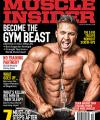Powerlifting For Bodybuilding

Learn how powerlifting can make you a better bodybuilder...
As bodybuilders, we oftentimes let our egos get the better of us. Bodybuilding is the end all be all. Lifting weights, while fun for most of us, is only a means to an end and is one part of the puzzle. Nutrition, rest, supplementation, etc., all come into play, and it is because of this complexity that many of us have a skewed view of powerlifting. Many bodybuilders have the idea that powerlifters are a bunch of out-of-shape, fat guys trying to satisfy their egos by lifting as much weight as they can (as if posing onstage in front of a crowd isn’t ego driven). Many bodybuilders even shy away from heavy compound movements noting that the risk for injury is too great and lifting more reps with less weight builds muscle better anyway. Nothing could be further from the truth.
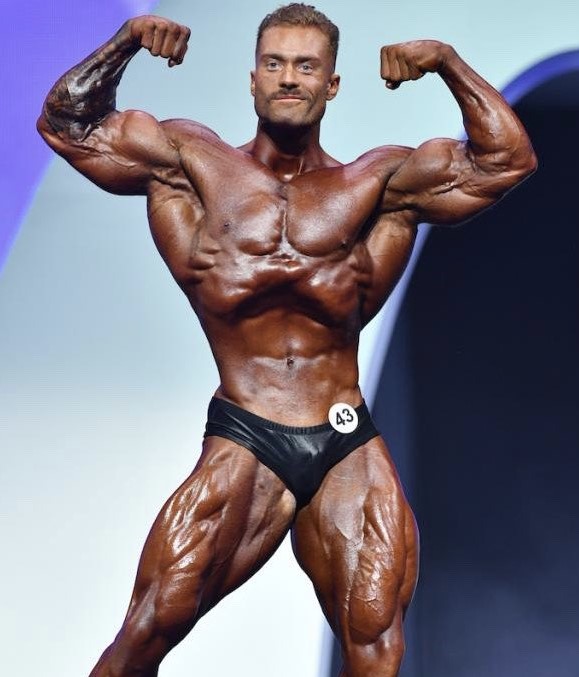
Some of the world’s top powerlifters actually have great physiques. Konstantin Konstantinovs, Brandon Cass, Shawn Frankl, Matt Krockzaleski, and Sam Byrd could easily be stage ready with a few months of dieting and do very well. Stan Efferding and Johnnie Jackson both hold world records in powerlifting and compete as IFBB professional bodybuilders. Ben White, another IFBB pro, can be seen on YouTube deadlifting 700 lbs. and benching 600 lbs. raw. Even the great Arnold Schwarzenegger and Franco Columbo competed in powerlifting and made their base from it. And of course, Ronnie Coleman, arguably the greatest bodybuilder ever to live, never competed in powerlifting but was no stranger to heavy weights, having deadlifted and squatted over 800 lbs. and front squatted 600 lbs. for reps! Certainly higher rep ‘pump’ style training has its place for a bodybuilder’s arsenal. But so does heavy work.

As a person who has competed in both powerlifting and bodybuilding, I can tell you that the heavy movements absolutely made me a better bodybuilder. For the longest time my legs were a huge weak point. At my first show my thighs barely measured over 21 inches. They were absolutely pathetic, and I heard about it from EVERYONE.
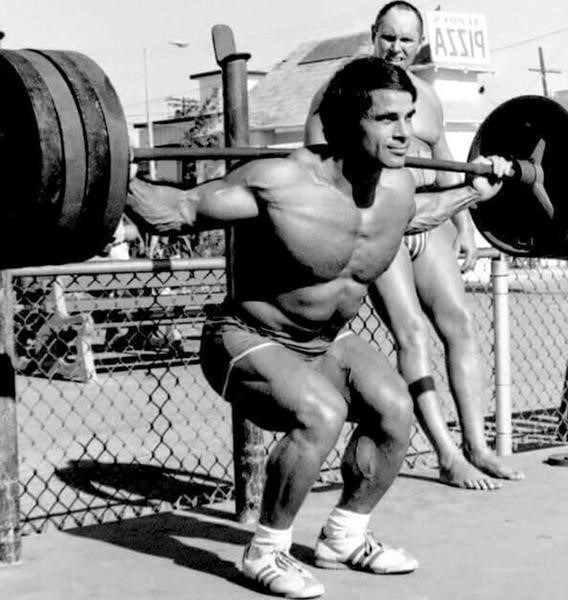
I was working them out really hard and following the advice of so called “bodybuilding experts,” making sure to train with maximum intensity 1x/week but getting plenty of rest to make sure I wasn’t “overtraining.” I was told I didn’t need to squat or deadlift to get my legs to grow, and that was fine by me because squats hurt, and I would’ve rather not done them. After a few years of spinning my wheels (pun intended), a friend convinced me to take up a hybrid-style routine where I did heavy work (squats, deadlifts, presses) mixed with lighter hypertrophy “pump” work. Against everything I had read, I started working out all my body parts 2x/week. Low and behold, my legs grew more in 4 months than they had in the previous 4 years. At my following show, they came in just over 24 inches, still very small by bodybuilding standards, but a significant improvement over recent years. Two years later, I won my natural pro card, and they topped out over 25 inches following the same training I had been doing. My legs were getting better, but still not nearly good enough to hang with the best.
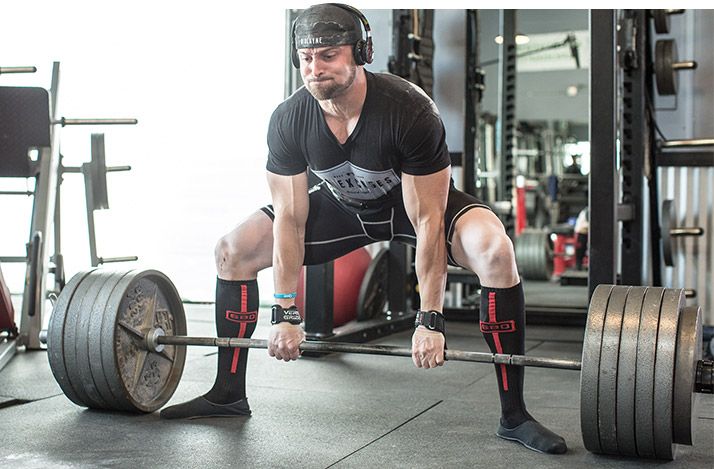
During the following off-season, I had a bit of an epiphany. I told myself, “I’m going to squat 500 lbs. for reps because there is no way I’ll be able to do that with skinny legs.” I didn’t know if that was the truth or not but it made sense. I’ve never met or seen anyone who squatted 500 lbs. for reps with relatively small legs. So I set out on a quest to squat 500 lbs. and deadlift over 600 lbs. Over time I adapted my routine to incorporate more and more pure powerlifting movements, and what I found astonished me. I GREW like crazy! I used several styles of power training and at one point even tried a crazy Russian routine called Smolov whereby I squatted 3-4x/week! I started using bands and chains to help get stronger and I did box squats, speed squats, deficit deadlifts, and rack pulls, all movements I had never even heard of when I started bodybuilding. The result? As we sit today, my thighs measure over 28 inches at the largest part, and, in addition to that, my back has grown immensely. I also own the current AAPF American raw squat and deadlift records at 568 and 700 lbs., respectively, in the 220 lbs. weight class. I recently squatted 525 lbs. for a triple and 495 lbs. for 5 reps. My legs may never be the best onstage because of their shape and structure, but powerlifting made them much better and confirmed my initial theory that I’d not be able to squat 500 lbs. for reps with twig legs.

So enough blabbering about me. What does this mean for you? Well, my friend, you may or may not ever deadlift 700 lbs., but that doesn’t mean you can’t make drastic improvements in your physique with powerlifting. Probably the most important thing powerlifting training does is increase your overall capacity for muscular growth. By increasing your strength, you’ll increase the amount of weight you’ll be able to lift when you train “bodybuilding style,” and this training will increase your potential for growth. For example, if you trained only straight bodybuilding style (8-15 reps) on squats, you might end up plateauing at a 350 lbs. squat for 8 reps (not necessarily, just an example). If you incorporated powerlifting style training into your regimen, however, perhaps you will become strong enough that you can squat 450 lbs. for 8 reps. Who do you think will have the greatest potential to increase leg mass over the long haul? It will likely be the person using more weight if all other variables are equal because they will be able to create more overload and greater muscle damage, evoking a greater growth response.
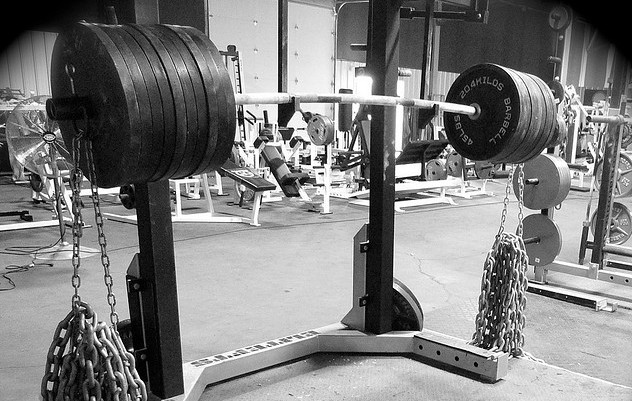
So while pure bodybuilding style training may give you more growth over the short term, a combination of power and hypertrophy training over the long term is going to provide more muscle by increasing growth potential! This is the basis for my PHAT (Power Hypertrophy Adaptive Training) that some of you may have heard me talk about. There are several dozen forms of the PHAT program but the basic premise is the same. Each muscle gets worked 2x/week. The first 2 days of the week are split into upper and lower body power days. These are followed by a rest day; then 3 days of traditional hypertrophy orientated bodybuilding training. Turn the page for a sample training program utilizing this split.

During the first two days of the week, you’ll focus on big power movements for your upper and lower body, like squats, front squats, deadlifts, deficit deadlifts, and box squats for lower body and barbell and dumbbell presses and rows as well as weighted pullups for upper body. Your goal should be to stay in the 3-5 rep range for 3-5 working sets on the compound movements and only use one power movement for lower body, presses, and pulls/rows (i.e., Don’t do squats and front squats in the same workout). Make sure you rest enough in between sets to completely recover and be ready for your next heavy set. A good way to make consistent progress is to rotate your power movements every 2-3 weeks. A few sets of auxiliary exercises can be done for smaller body parts like hamstrings (though deadlifts and squats involve significant hamstring recruitment), calves, shoulders, and arms. Auxiliary exercises would include movements such as extensions, glute ham raises, good mornings, standing and seated calf raises for legs and dumbbell presses, upright rows, curls, and skull crushers for upper body auxiliary work.

On your hypertrophy days, you should do some speed work (6-8 sets of 3 reps) with 65%-70% of your 3-5 rep max to start your workout with the power exercise you used earlier in the week. For example, if you did squats for 3 sets of 3-5 reps with 300 lbs. earlier in the week, then you’d do 6 sets of 3 reps on squats with 195-210 lbs. with an emphasis placed on moving the weight through the concentric phase of the lift as quickly as possible. Rest no longer than 90 seconds in between each of these speed sets. This builds explosiveness and speed. If you have access to chains or bands, they can be VERY helpful in building your explosiveness. If you choose to use them, however, you may want to lower the weight you are using to compensate for the increased load. Make sure the weight is light enough so that you can move it explosively. If you are slowing down at any point during the concentric phase, then it’s likely too heavy. After you finish with your speed work for the day, you should train basically like you normally would for a bodybuilder. Your rep range should be 10-12, and keep your rest periods to 1-2 minutes between sets.
I’d increase the volume of these sessions by approximately 50%-75% compared to your power days. Make sure you don’t overuse failure on your hypertrophy days or you’ll burn out quickly. I only recommend going to absolute failure on the last set of each exercise. On prior sets, stop 1-2 reps shy of failure. This may seem counterintuitive but it will help you maintain greater overall power output during the workout and it will prevent neural fatigue and burnout. For the first 2-4 weeks, you may want to not train to failure at all until your body becomes accustomed to the volume and frequency.

Now, I know you are thinking, “I will overtrain if I workout each body part 2x/week!” While the first few weeks you may be very sore, tired, and not feel great, if you push through this routine, after about 4 weeks, you will find that your body will adapt to the increased frequency and you will hardly get sore for more than a day. You will also find that your strength will start to skyrocket!
P.H.A.T. TRAINING PROGRAM
Day 1 - Upper Body (Power Day)
| EXERCISE | SETS | REPS |
|---|---|---|
| Bent-over or Pendlay Rows | 3 | 3-5 |
| Weighted Pull Ups | 2 | 6-10 |
| Rack Chins | 2 | 6-10 |
| Flat Dumbbell Presses | 3 | 3-5 |
| Weighted Dips | 2 | 6-10 |
| Seated Dumbbell Shoulder Presses | 3 | 6-10 |
| Cambered Bar Curls | 3 | 6-10 |
| Skull Crushers | 3 | 6-10 |
Day 2 - Lower Body (Power Day)
| EXERCISE | SETS | REPS |
|---|---|---|
| Squats | 3 | 3-5 |
| Hack Squats | 2 | 6-10 |
| Leg Extensions | 2 | 6-10 |
| Stiff-Legged Deadlifts | 3 | 5-8 |
| Glute Ham Raises or Lying Leg Curls | 2 | 6-10 |
| Standing Calf Raises | 3 | 6-10 |
| Seated Calf Raises | 2 | 6-10 |
Day 3 - Rest
Day 4- Back & Shoulders (Hypertrophy Day)
| EXERCISE | SETS | REPS |
|---|---|---|
| Bent-over or Pendlay Rows | 6 | 3* |
| Rack Chins | 3 | 8-12 |
| Seated Cable Row | 3 | 8-12 |
| Dumbbell Rows | 2 | 12-15 |
| Close-Grip Pulldowns | 2 | 15-20 |
| Seated Dumbbell Presses | 3 | 8-12 |
| Upright Rows | 2 | 12-15 |
| Side Lateral Raises | 3 | 12-20 |
Day 5 - Lower Body (Hypertrophy Day)
| EXERCISE | SETS | REPS |
|---|---|---|
| Squats | 6 | 3* |
| Hack Squats | 3 | 8-12 |
| Leg Presses | 2 | 12-15 |
| Leg Extensions | 3 | 15-20 |
| Romanian Deadlifts | 3 | 8-12 |
| Lying Leg Curls | 2 | 12-15 |
| Seated Leg Curls | 2 | 15-20 |
| Donkey Calf Raises | 4 | 10-15 |
| Seated Calf Raises | 3 | 15-20 |
Day 6 - Chest & Arms (Hypertrophy Day)
| EXERCISE | SETS | REPS |
|---|---|---|
| Flat Dumbbell Presses | 6 | 3* |
| Incline Dumbbell Presses | 3 | 8-12 |
| Hammer Strength Chest Presses | 3 | 12-15 |
| Incline Cable Flyes | 2 | 15-20 |
| Cambered Bar Preacher Curls | 3 | 8-12 |
| Dumbbell Concentration Curls | 2 | 12-15 |
| Spider Curls | 2 | 15-20 |
| Seated Overhead Triceps Extension w/ Cambered Bar | 3 | 8-12 |
| Rope Pushdowns | 2 | 12-15 |
| Cable Kickbacks | 2 | 15-20 |
Day 7 - Rest
* Use 65%-70% of normal 3-5 rep max
I do recommend deloading once every 6-10 weeks. A deload would consist of 1-2 weeks of lifting at 60% of your normal weights. This will be enough to maintain your strength, but light enough to allow you to actively recover.
This is only one style of many P.H.A.T. routines I have done, not to mention many other powerlifting routines. Some other powerlifting routines I recommend reading that have worked well for me include:
• Sheiko Training
• Westside Barbell Training
• Smolov Squat Routine
Now get in the gym and stop making excuses not to move some heavy iron. It could be your path to huge gains!
Layne Norton is a pro natural bodybuilder with the IFPA and NGA and pro powerlifter. He has a PhD in Nutritional Sciences with his thesis emphasis in muscle protein metabolism. He owns BioLayne LLC which offers nutrition and training consultations for bodybuilders, powerlifters, and weightlifting enthusiasts. To learn more about Layne and the services he offers, visit his website at: www.biolayne.com.
To keep up with the latest fitness industry news and product releases, subscribe to our free newsletter HERE!
*© Copyright Notice: Muscle Insider can’t always determine which images are protected by copyrights. We use images that are part of the public record and believed to be under the public domain. If for some reason somebody believes copyrights are violated, we will remove or replace the content in question after receiving a DMCA notice.

